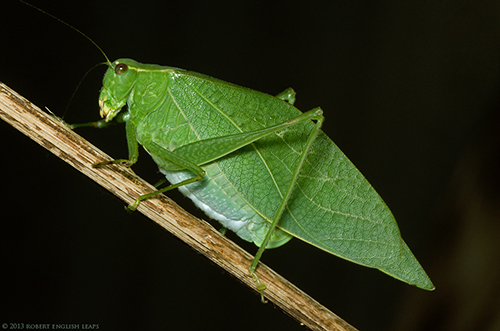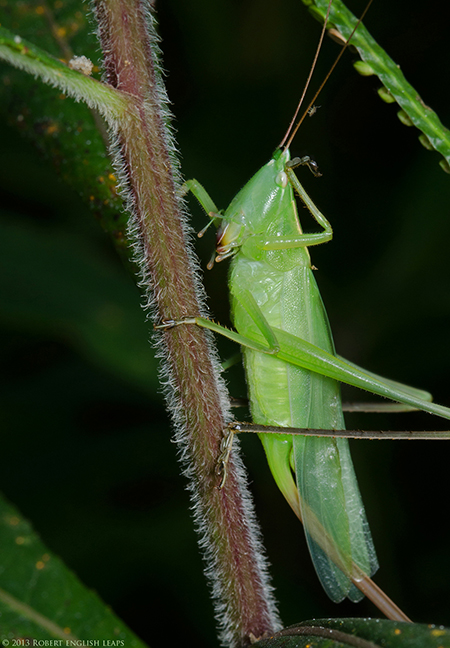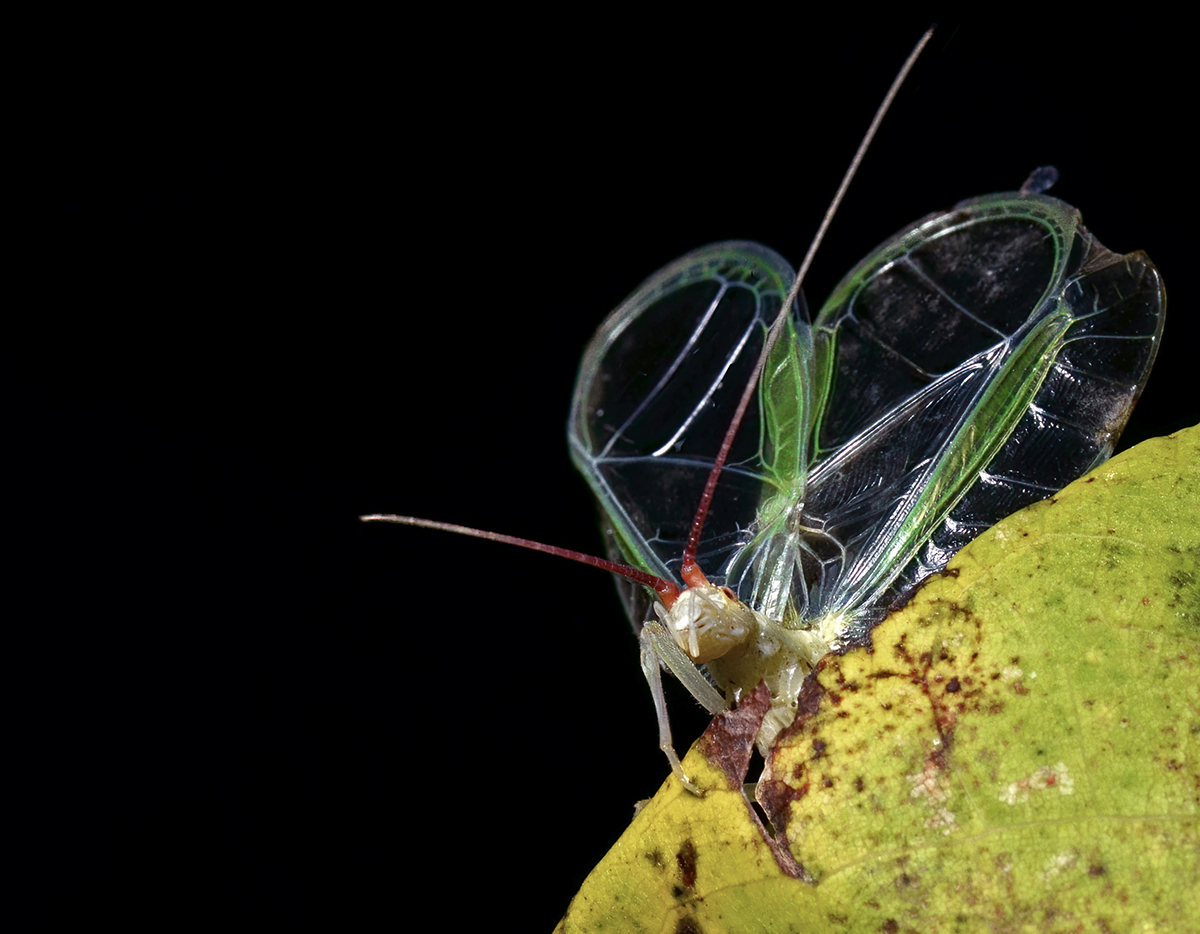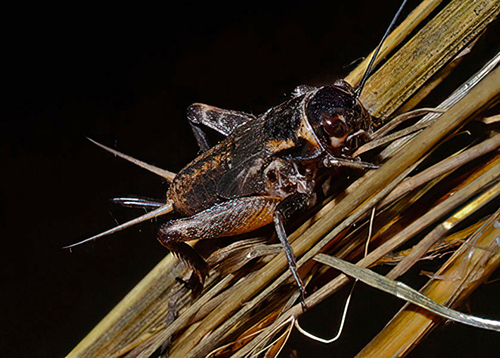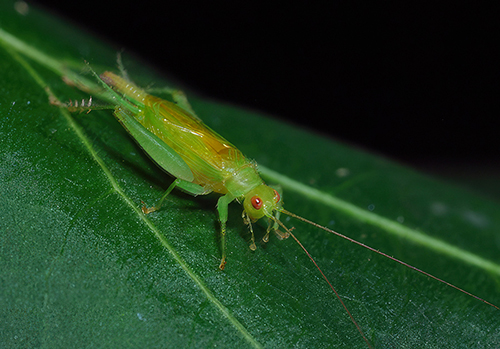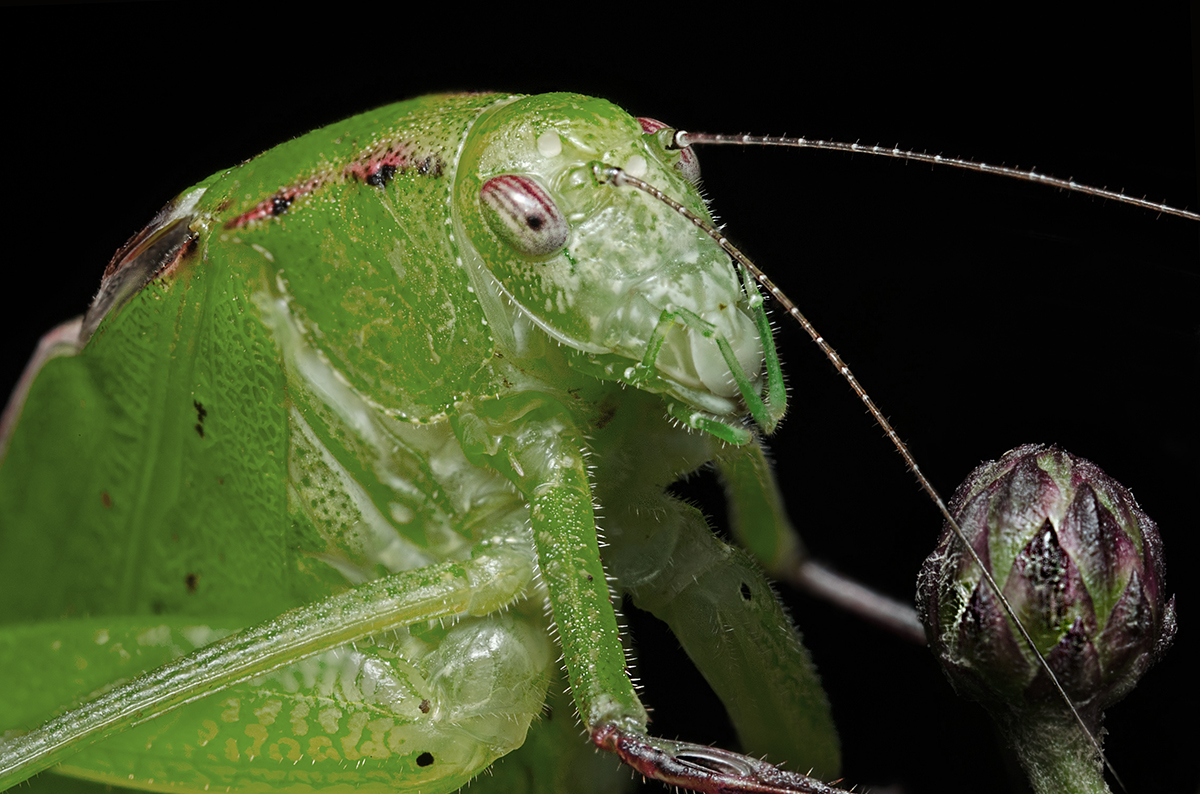In his book, Crickets and Katydids, Concerts and Solos, Vincent G. Dethier makes the case that while spring natural sounds are dominated by the frogs and the birds, summer nights belong to the insects. "By early June the spring peepers have abandoned their chorusing for solitary living. The songs of birds are muted and no longer have the note of spontaneity and urgency as at the start of nesting season. There comes a pause in nature's score...Few people are acquainted with the singers who will replace the birds. They may have read of the cricket on the hearth or heard the arguments of the katydids, or noted in passing the "hot bugs," the cicadas, but unless they have tuned their ears to the level of the grasses or cocked them to the thickets, the richness of the insect repertoire is hidden from their consciousness." The species discussed here are just a few of our favorite summer night sounds. There are many others, but the species featured here are the ones that we tend to encounter the most. The songs here are not so high in frequency as to be hard to hear for older listeners (it's always a little discouraging when you watch a recorded soundtrack being played and you hear absolutely nothing) and are distinctive. Earphones will help you hear the fainter songs.
Katydids belong to the family Tettigoniidae. The Northern True Katydid is in the subfamily Pseudophyllinae, and the species name is Pterophylla camellifolia. It ranges over most of the eastern United States. Northern True Katydids typically sing from fairly high in the tree canopy, making them difficult to spot. The genus name, Pterophylla, literally means "wing leaf" and they are amazing leaf mimics. Compare the pattern in the katydid's wings in the top image above to the patterns in the leaflet in the lower right-hand corner of the image.
Oblong-winged Katydids are usually a bright green color but can also occur in the yellow form shown in the image at right. We find the yellow form to be rarer. Pink forms have also been found.
The easiest way to locate coneheads is by listening for their songs. Just slowly drive a few back roads that pass by weedy fields at dusk or later and you should hear them. The Robust Conehead is the larger of the two species and is between two and three inches long. It has a very long, rasping song on one pitch. Like a bad musician, it seems to try to make up in sheer volume what its song lacks in nuance. As you drive by you can sometimes hear the song Doppler-shifting downward. The song has a peak frequency of around 8 kHz, and you can listen to one we recorded by clicking here. There are two cuts - the first cut records the sound as you might hear it at a distance and includes Northern True Katydids in the background. The second cut records the sound as you might hear it if one is singing right beside the road.
If you first get familiar with the long continuous song of the Robust Conehead, then you will quickly become aware of the generic conehead raspy song and then hear the pulsed nature of the Nebraska Conehead song. To listen to a recording of a Nebraska Conehead that we made, click here. If you happen across a conehead that is not singing, look carefully at the underside of the cone and observe how it is marked. These markings are a useful way to distinguish between species. Lang Elliott's The Songs of Insects book has nice diagrams of the diagnostic black patches on the undersides of the cones. See the references below.Start listening for these two species in late June and early July. Another great reference for these songs and the other songs in this guide is Thomas J. Walker's Singing Insects of North America website at the University of Florida. The depth of this website is amazing. Between the recordings, the written material and the multitude of references, it is a naturalist's dream.
The Broad-tipped Conehead was a species that gave me problems when I first encountered it. It didn't quite fit the descriptions of species in the books that I had, and the time of year that I heard it was quite early. It was in some long grass in my front yard. You can listen to the song here. After searching without success, I contacted Thomas J. Walker at the University of Florida and shared recordings of the songs and the dates of the observations. He immediately said I had recorded a Broad-tipped Conehead, Neoconocephalus triops, and that the early spring singing was typical for this species. Like many species that begin singing early in the spring, the adults overwinter. The Broad-tipped Conehead sings in spring from fields or yards with high grass. It is the only conehead whose cone is broader than it is long.
Habitat is dry to somewhat wet grassy
open areas. The song is a weak continuous buzz. The buzz seems to crackle
like a noise you might hear near wires carrying high voltage. You can
listen to a Round-tipped Conehead song here.
Note the Springtail that is hitching a ride on one antenna of
the conehead.
Coneheads can sometimes be approached closely. Note that this species has a single black band across the
bottom of the cone. You can see the black band in the image at left.
As with other species of coneheads, there are both green and brown color forms.
If you are trying to locate a singing conehead, you can use a simple
trick to narrow down your search territory. If you are with another
person, stand about 10 or 15 feet apart. Each person then shines their
flashlight or headlamp toward where the sound seems to originate. Note
where the two beams cross and concentrate your search in that area. This
method can save some time. 6. Tree Crickets are the sound engineers of the insect world. Many species use the edges of leaves, or even chew holes in leaves, to make their sound more focused and directional. They spread their articulating wings and raise them to a 90-degree angle to their body to act as a sound amplifier.
The effect is kind of amazing! When I was taking the above image I found
that if I moved my head six inches to the right or left, the sound
intensity dropped off markedly. If you are able to closely approach a
singing tree cricket on a shrub or bush, try the experiment for yourself.
Also, if you are close, observe or photograph any small black marks at the
base of the antennae. These markings are diagnostic and can reveal which
species you are observing. There is a diagram of these markings in Lang
Elliott's The Songs of Insects book, and
also in the Singing Insects
of North America website.
The Broad-winged Tree Cricket is in the family Gryllidae, subfamily
Oecanthinea. It has a long trill around 3 kHz
frequency. Tree crickets are quite cold-tolerant and are one of the last insect songs to be heard when the temperatures
start to drop. The cool nights cause the pulse rate to slow down and the
songs sound a little sad. You can listen to one sing
here.
7.
Most
tree crickets have long trills, but the trills in a few species like the
Snowy Tree Cricket are pulsed. The Snowy
Tree Cricket has a series of chirps, and the number of chirps can be timed
to estimate an approximate ambient temperature. Simply count the number of chirps
in 13 seconds and add 40 degrees to get the approximate temperature in
degrees Fahrenheit. You can listen to the song
here.
The song is a short ringing trill and is quite distinctive. The dominant
frequency is around 7 kHz. To check the frequencies or compare sonograms
on any of the insect songs, you can record them on your smart phone (I use
the Voice Record Pro app) and then open them up in the free Raven Lite 2
software. You can download this software from
this location.
The habitat of the Eastern Striped Cricket is grassy and weedy areas. You can listen to the song
here.
The Columbian Trig, Cyrtoxipha columbiana, is a striking trig only about
1/4" to 1/3" in length.
The song of the Columbian trig is a series of musical chirps that are not
very loud, and if you've grown up in the south, you tend to overlook them
because you've heard them all of your life. Listen for a faint chorus that
sounds like distant sleigh bells. Once heard, you will hear them a lot!
Finally, there are the voices we have yet to hear. One species I would love to hear is the Common Virtuoso Katydid. Though we came across the singer, we never heard the song. This one seems to be lost in contemplation of the flower bud it gazes upon. Happy listening!
References: The Songs of Insects, Lang Elliott, Book and CD Singing Insects of North America, Thomas Walker, University of Florida Crickets and Katydids, Concerts and Solos, Vincent G. Dethier Raven Lite 2 (Software from Cornell)
I would like to dedicate this to my parents,
William A. English and Mary C. English All images and recordings © 2023 Leaps |
